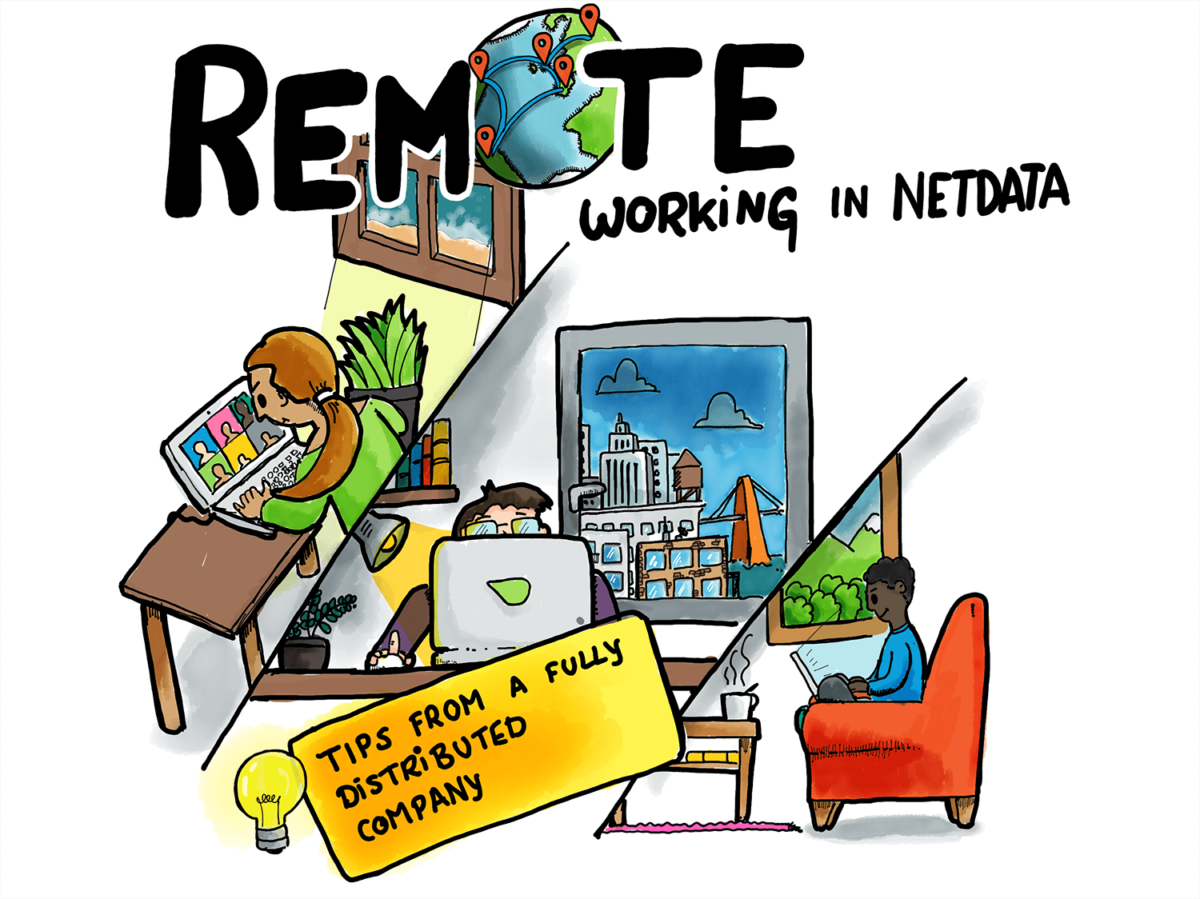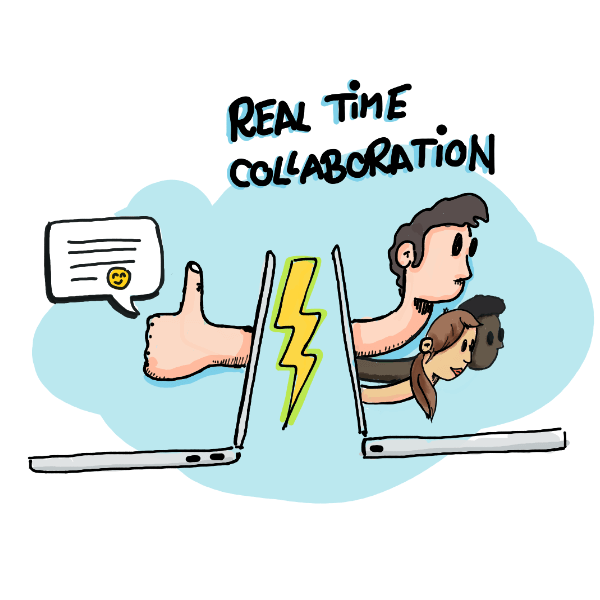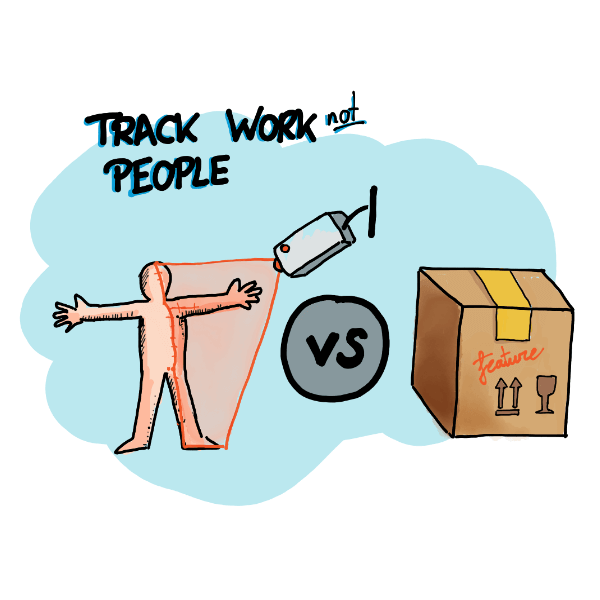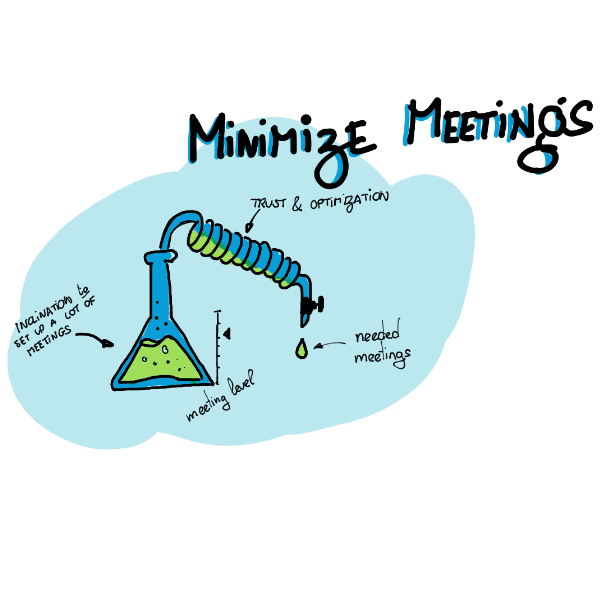
The coronavirus (COVID-19) pandemic has forced many organizations to take unprecedented steps towards remote working. As a fully distributed team, we’ve faced the common challenges of remote work. Based on our experience from our very beginning in 2018, all but a few of these organizations new to remote working will face hurdles to overcome and may try to revert to colocation as soon as possible. Remote working is hard, even when it’s carefully planned and executed. When the transition is rushed and seen as a necessary, temporary inconvenience, challenges are all but inevitable.
In this post, we provide a few very practical tips to help organizations interested in preventing this forced experiment from severely impacting their day-to-day business. Moreover, if your organization has the drive and ability to quickly implement these changes, you may even recognize the great opportunities that remote working provides. Perhaps you still won’t have an overall positive experience, but at least you may be willing to consider a more strategic shift after the current crisis ends.

Tip 1: Enable real-time collaboration
It is extremely important that all employees, regardless of their department, have access to an instant messaging and video conferencing platform. Collaboration on shared artifacts (documents, presentations, code repositories, diagrams) is also essential.1.1 Instant Messaging
Although asynchronous working is a habit you need to get used to, if you’re working remotely, there are times where things can’t get done asynchronously by just using email or other forms of documents due to the long response times and overhead in writing formal responses. IM is fast, informal and still asynchronous enough to give people some breathing space when they need to concentrate on a task. We use Slack, which has a perfectly good free tier and an affordable paid version. A good alternative is Mattermost, an open source solution that also offers enterprise paid plans. Some specific tips on how to make IM a tool, instead of a nuisance:- Make the IM notifications discreet. If you get pop-ups every time someone types something in a channel you’re participating in, the interruptions will be constant.
- Ensure anyone can create a public or private channel and invite anyone they want to it. This is a great method of relaying information to specific teams without flooding communication channels.
- Use private channels sparingly to avoid administrative overhead and promote transparency.
- Ask people to search if an existing channel already exists before creating a new one to prevent channel sprawl.
- Encourage everyone to create channels for socialization (e.g. random, fun, sports, games, etc.). This tip is quite important for a long-term use of remote working, as you need to somehow make up for the loss of personal contact.
- Especially if your organization is geographically distributed, make sure that people are online and responsive in IM during the agreed common working hours. We have moved beyond mandatory common working hours in Netdata, but we recommend that you start by specifying slots of at least a few hours a day during which everyone must be online and responsive.
1.2 Video Conferencing
Phone conferences are bad for remote working not only due to the call costs, but mainly because they completely eliminate the nonverbal communication that is necessary for developing trust. It’s impossible to replace face-to-face, personal contact, but video conferencing is the closest substitute we have. At Netdata, we mostly use Google Hangouts because it comes with the rest of the GSuite tools we use. It does its job, and we don’t pay extra for it. You should also consider selecting something that is included at no cost with your existing solutions, or use a solution that has a free tier, such as Zoom (the free tier has an annoying time limit on calls, but you can get used to it for most purposes). We did not like the quality of the Slack video conferencing and did not upgrade to the enterprise GSuite plan, even though we needed recording. We just got a few paid Zoom licenses instead and distributed them to a few people so they could organize the sessions that needed to be recorded. For example, we always record refinement sessions for those who may have missed the meeting. A few more tips on video conferencing:- Encourage people to have permanently running video conference calls that function as virtual co-working spaces. It can be as simple as pinning a URL on their IM channel. People can be doing their normal work while in these conferences; it just allows for quick verbal communication.
- Ensure everyone has a good microphone, a camera, and a stable internet connection with sufficient bandwidth.
- Especially when having a meeting with just a few people, ask everyone to keep their camera on at all times (if possible) so that the meeting is more personal and the participants remain engaged and focused.
1.3 Shared Artifacts
We are a software company, so GitHub is a no-brainer for our main collaboration tool. We also use Google Drive to collaborate on some documents, but we have decided to make GitHub our single source of truth for pretty much everything that is text-based, even for things unrelated to code such as our company handbook. If you don’t already have a solution for quick and easy collaboration on artifacts, you’ll need one, regardless of whether you stick to remote working or not.
Tip 2: Track work, not people
The constant question that comes up with remote work is how you ensure that people are actually working. We were absolutely clear about that from the beginning: we do not care about time; we care about results. You absolutely must have a way of tracking tasks and deliverables and center all your management processes around those backlogs. There are countless tasks and project management tools out there. At the bare minimum, ensure all work is recorded in the tool. If you need to track time spent as well (we don’t), you should ensure that the tool you select supports time tracking.Since we were already using GitHub for the most important work we do as a company, we decided to purchase ZenHub, a product that literally sits on top of the GitHub user interface and provides additional necessary features for agile development. Every team in the company now has at least one GitHub repository, even without artifacts, so that we can keep track of our work via GitHub issues. We rely on ZenHub’s Kanban view to do our daily or weekly reviews of progress towards our goals.
The exact process we follow depends on the team and the lessons we’ve had from multiple iterations. Some teams use Scrum, others Kanban, others were just formed and are only starting. As long as you are insistent on the work being recorded in your tool of choice, you don’t have to worry about whether people are actually working or not.

Tip 3: Minimize formal meetings
Your natural inclination may be to set up a lot of meetings to make up for the lack of face-to-face time and to maintain an illusion of control. In fact, if you follow tips 1 and 2, you’ll realize that you don’t need more meetings than what you probably have already. Short, daily standups and the Scrum ceremonies every two weeks are enough for the engineering teams that follow Scrum. Daily standups and weekly review and planning meetings are enough for the teams that follow Kanban. You will always need other calls of course, but treat them as you would be treating face-to-face meetings. You don’t have people sitting in a meeting room all day, so you don’t want them doing that from home either (note that the virtual co-working space mentioned in 1.2 is not the same thing). Having an agenda prior to the start of the meeting is another method to creating efficient, productive calls.What you will and will not see during the forced experiment
Assuming that you’re in an established company that is simply new to remote working at scale, there are a few fundamental challenges that you will be happy NOT to encounter:- The challenge of establishing trust in a remote working environment does not apply to you. Your people have worked together in an office, so it’s already as good as it will get. You don’t have to (and likely should not) set up expensive get-togethers or try tactics like a virtual watercooler to get people to feel like part of the team.
- You don’t need to deal with multiple time zones for the first time, so you don’t have to adapt your processes.
- You don’t need to screen out people with a “hired gun” mentality who look at remote work like contract work.
- You don’t have to set up expensive, elaborate training programs for junior hires. We circumvented this issue completely by only hiring experienced professionals at Netdata, but we realize that it’s not possible for every company.
- Access to a global talent pool that you just can’t source locally wherever you are.
- Office cost-savings.
- No 9-to-5 mentality. Depending on how you implement your long-term, remote working strategy, you may actually face the opposite problem of people not being able to set boundaries which ends up negatively affecting their work-life balance.
Since Netdata never had offices, it should be obvious that the COVID-19 pandemic hasn’t impacted us as much as it has other companies. We did have to cancel our much-anticipated quarterly meet-up, some of our people had to rearrange their schedules, and a couple of people who preferred working from co-working spaces had to stay at home. But most of us had been working mainly from home anyway, so the impact has been minor to date.
We hope that our insights can help you get through this difficult period and that the emergency situation is resolved soon. But we also hope that you will not end the forced experiment in remote working with a bad taste in your mouth: remote working can be an amazing way of working that can boost productivity, minimize costs and enable rapid expansion to different geographies.
Although there are undisputed benefits to colocation, there are also tremendous advantages to remote working, even if that is not the primary way of working in your organization. Take advantage of it by building the necessary cultural and organizational foundations that will enable you to become a more flexible, more liberating place for people to do the best work of their lives: allow your employees to occasionally, frequently even, work from home or open up a few remote positions where possible. We are firm believers in the value of remote working, and we hope you’ll see it too!
Sound good? We’re hiring!